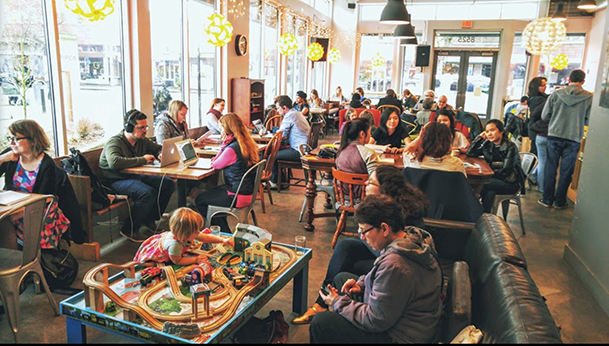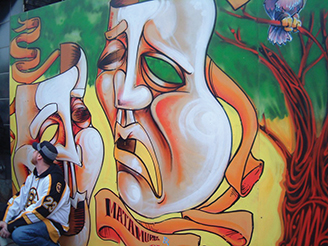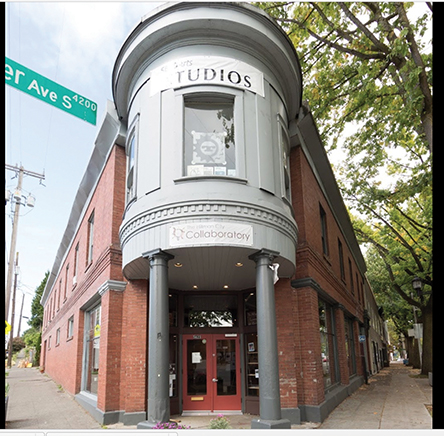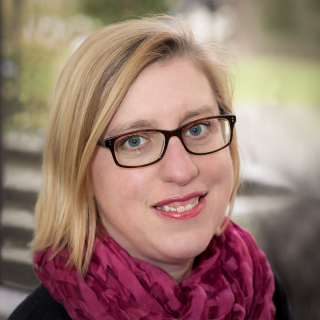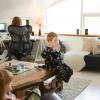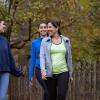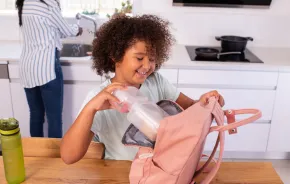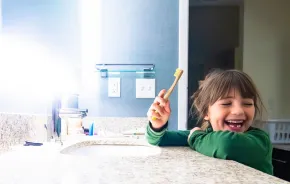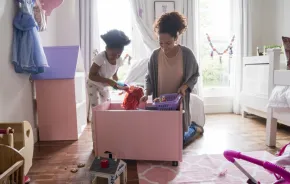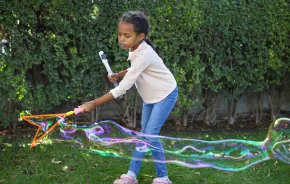Finding or making a dream home is one thing, but family life is impacted by many factors outside our four walls and beyond our own backyards. How do you know a dream neighborhood when you see it? How do you make a neighborhood truly magical? Is it access to reliable transit? A craft beer brewery that offers kiddos a sandbox and a hot dog truck? Is it the lure of nearby hiking trails?
In the Puget Sound region, neighborhoods are evolving all the time, out of necessity: Seattle ranks fourth for population growth out of the 50 biggest U.S. cities; 236 new people move here every day. Markets changes, schools evolve and what was once a commercial edge or forested mountainside can suddenly become the hippest, most affordable or most accessible new place to live.
We’ve canvassed residents and communities all around the region and used data from Zillow and WalkScore to find four unique neighborhoods that are luring families even as they continue to transform.
Greenwood
Median home value: $550,400
What to look for in your own neighborhood:
- Walkability. Greenwood is Seattle’s 15th most walkable neighborhood
- Access to downtown. 15 minutes by car, with good bus options
- Diverse food and restaurant options
- Abundance of kids’ camps and classes
North Seattle’s Greenwood neighborhood is like that scrappy, resourceful friend who transforms cataclysmic events into growth opportunities. The March 9, 2016 natural gas explosion that leveled beloved spots Mr. Gyros, Neptune Coffee and Quick Stop was the second disaster within six years; a 2009 arson destroyed four businesses in the neighborhood’s downtown core. During the latest setback, this creative community started the Greenwood Relief Fund for all affected by the blast. As part of the fundraising effort, artists painted more than 20 vibrantly decorative murals on the plywood boards covering more than a dozen damaged businesses. The murals were then auctioned off, with proceeds going to the fund. A Sept. 9 Phoenix Party at the explosion site celebrated Greenwood’s latest rise.
Business owners and residents adore this vibrant enclave. “While walking, I see people I know everywhere. I can purchase good coffee on any block and I know many shop owners who I directly support with my purchases,” says Marnee Chua, president of Works Progress, a coworking space across the street from the Fred Meyer store.
Walk Greenwood like the natives do — from N. 75th Street to N. 105 Street — and you’ll encounter spaces that accommodate many needs. Check out the transporter at the Greenwood Space Travel Supply Co., a front for The Greater Seattle Bureau of Fearless Ideas, a nonprofit writing and tutoring center for kids. Try a cretzel (a cross between a croissant and a pretzel) or a work-of-art salad at Coyle’s Bakeshop. Buy postage from Sonya, a clerk at the Greenwood post office who is known for her kind chatter. “I just think people have stopped paying attention to other people. So I am paying attention,” she says.
Spy older businesses alongside the neighborhood’s latest incarnations: nail salons, bike shops, scruffy and more recently opened, not-so-scruffy bars, and restaurants to fit every budget. Residents follow the Mr. Gyros food truck’s Twitter alerts to learn when it will be stopping in the area. Family favorites include Tiko Riko Mexican restaurant, Gorditos Healthy Mexican Food, Razzi’s Pizzeria and Luna Azul Latin Cuisine. Top date-night picks include Gainsbourg and Naked City Brewery & Taphouse. The nonprofit Green Bean Coffeehouse practices radical hospitality, welcoming everyone into its space, and Top Ten Toys is an essential stop for kids.
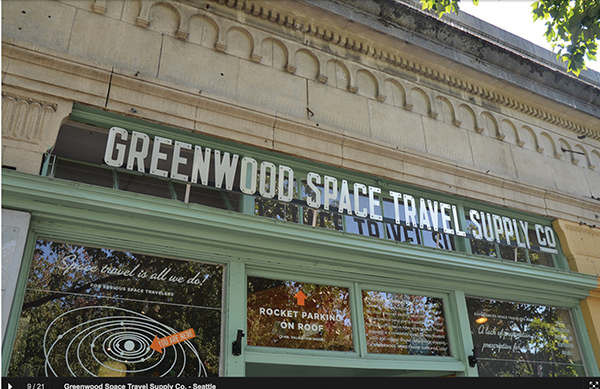
“Greenwood is still real, people are not putting on airs. Whether people are Baranof [a dive bar and diner] customers or Flint Creek [a new upscale eatery] regulars, we can meet at the coffee shop and not have any issues,” says Doree Armstrong, editor of Phinneywood.
Transplants from Bogota, Colombia, Dianna Grusczynski’s family came here in 2009 in part to maintain a one-car lifestyle. This past summer, the camps attended by Grusczynski’s daughter were all within walking distance, including one at Taproot Theatre and another at Made Sewing Studio. They’ve found community at Music Center of the Northwest, where her two kids play instruments.
“Greenwood is not fully gentrified. We still have a neighbor who receives food stamps who bought her house 40 years ago, and there’s public housing just north of 85th,” says Grusczynski. While multimillion-dollar homes are currently under construction, her family relishes the diversity that still exists in Greenwood.
Snoqualmie Ridge
Median home value: $560,700
What to look for in your own neighborhood:
- Walkability. Within Snoqualmie Ridge, kids walk everywhere, although errands often involve driving
- Access to nature. Two minutes to Snoqualmie Falls, 30 minutes to Snoqualmie Pass
- Abundance of kid-friendly events and a top-rated school district
Ridge pioneers started moving to this master-planned community starting in 1998. This well-cultivated space edges close to the Cascade Mountain Range, making nature escapes easy. Built on 2,100 acres of land originally owned by the Weyerhaeuser Co. near Snoqualmie Falls, the development has more than 3,500 homes, a business and retail center, and a private, PGA Tour–sanctioned golf course, TPC Snoqualmie Ridge. Both pioneers and recent settlers say that what they’ve found here is real community, where people talk to each other and look out for one another.
“Snoqualmie has the small-town feel that people long for. ‘It takes a village’ is reality in our town. Kids as young as 8 to 10 years old can be found walking ‘the Ridge’ with friends unsupervised,” says Danna McCall, editor of LivingSnoqualmie. Her family moved here in 2001, before retail and schools arrived. Her husband works in Seattle, her two oldest children attend college and her two youngest attend Mount Si High School. Residents are excited about this school’s new $200 million, state-of-art facility opening in the fall of 2019.
The Ridge’s sidewalks hook into trails that connect to downtown Snoqualmie, North Bend and Issaquah. A bonus: More snow falls here than in Seattle. A YMCA is a joint venture with the City of Snoqualmie, and McCall says it’s a true community center busy with residents of all ages.
Resident Rachel Krohn loves park hopping on foot or by bike with her 7- and 9-year-old kids. Every summer, they discover new parks that are tucked into all of the developments.
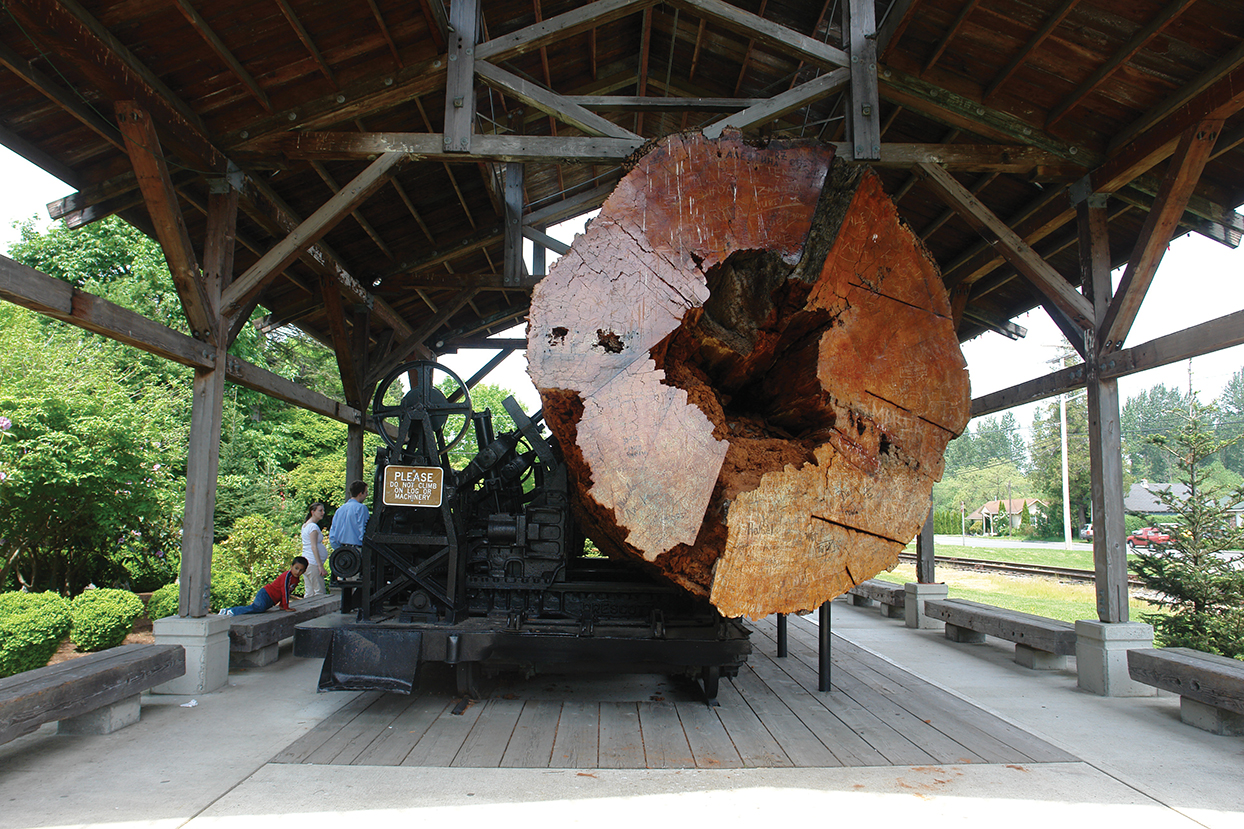
The first time Ghazal Sharifi and her husband visited the Ridge, they were thrilled to see hordes of children wandering around the neighborhood on the sidewalks and playing basketball. They bought a home here partly because of the top-rated public school system for their 1- and 4-year-old daughters. They relish the quiet, pitch-black night sky after returning from work and preschool/day care in downtown Seattle, which is a 30- to 45-minute commute away.
Sharifi, who is Iranian American, says the Ridge lacks the diversity of a city, but she appreciates the community events specifically targeted at children. Think ice cream socials and summer picnics with bouncy houses and face painting, and free music and movies in the parks.
In nearby historic downtown Snoqualmie, Ridge residents like Mexican restaurant Caadxi Oaxaca, the Northwest Railway Museum, with its historic train rides, and Sigillo Cellars’ tasting room. Residents also hang out at Infusion, a locally owned Ridge restaurant, which has live music and seasonal outdoor seating. A new retail development will open next summer with a large Safeway grocery store, Bartell Drugs, a Starbucks drive-through, more restaurants and a second gas station.
Snoqualmie Falls is a two-minute drive away. Whenever Krohn and her sons had an extra hour last summer, they visited the falls, jumping off boulders into pools of water, thanks to new access to the river below the falls. It’s this access to nature that offsets her husband’s hour-long commute to his Bothell-based job. “He says, ‘I’ve been staring at the mountain tops and at the mist in the trees. I feel good by the time I roll in,’” says Krohn.
Hillman City
Median home value: $428,400
What to look for in your own neighborhood:
- Diversity. 59 languages are spoken in the 98118 ZIP code area
- Access to light rail. A stop is located a mile north in Columbia City
- Social justice incubator spaces
A mile south of Columbia City in southeast Seattle’s Rainier Valley, Hillman City is a neighborhood under construction, where social and civic transformation has been carefully considered by many residents. Boarded-up buildings bear signs about new businesses coming soon, including NW Peaks Brewery and Young & Young Smoked Fish Shoppe. Residents say it’s the communication between current and future owners and the people who live here that makes Hillman City the only place they want to call home.
“Honestly, I love everything about it. I’ve lived down here for 17 years, and I wouldn’t want to live anywhere else,” says Alyssa Royse, who opened Rocket CrossFit with her husband five years ago and says they moved here to avoid raising her now 17-year-old daughter in a non-diverse neighborhood. “Standing on a street corner, I hear many languages spoken. Tolerance comes from exposure. Hillman City is one of the last remaining enclaves of diversity in a city that is rapidly pricing people out. And yes, I worry, a lot, that we are losing it, too.”
Resident Kirsten Harris-Talley says community members are creating models of resistance and resiliency while facing gentrification. Her family co-owns Black & Tan Hall, a community food, arts and performance space built on the legacy of Seattle’s original Black & Tan, an integrated club where people of all colors could be together during Prohibition. With plans to open in January 2017, Black & Tan Hall is a cooperative model, with artists, musicians and community members paying through money and labor; when profit arrives, members will receive dividends.
“We are doing work parties two to three times a week. My 5-year-old daughter stands next to me and my 18-month-old son is on my back while we work with our neighbors,” says Harris-Talley, a black woman who bought a home with her Latino husband in 2005, glad for a community that reflected their heritage and values.
The Hillman City Collaboratory, another anchor space, shares this value system. This multiuse complex aims to be an “instrument of transformation,” providing spaces and programs designed to create community while equipping change makers. Neighbors and more than 30 local nonprofits meet for an array of activities here, renting workspace and hosting meetings, free community meals and multicultural events. There’s also a learning kitchen, and a community park and garden.
The Valley & Mountain church meets at the Collaboratory, too. The Rev. John Helmiere, the church’s convener and minister of listening, was recruited upon his graduation from Yale Divinity School six years ago to help start a new spiritual community. “Both Valley & Mountain and the Collaboratory are places where people can learn not just the talk, but how to perform a social justice action, too,” says Helmiere.
Residents also speak of the community they’ve found at Rocket CrossFit, Tin Umbrella Coffee and attached parklet. Restaurant favorites include Big Chickie, Eyman’s Pizza and Adu Café. A light-rail stop is 1 mile away in Columbia City, and residents shop at the Rainier Beach Safeway and Columbia City’s PCC. Nearby Seward Park beckons with a stand of old-growth trees, hiking and running trails, and Lake Washington beachfront.
Bothell
Median home value: $464,900
What to look for in your own neighborhood:
- Walkable main street and downtown
- Access to nature. Numerous parks, the Burke-Gilman Trail, short drive to hikes
- Top-rated school district
- Top-ranked university within town limits. University of Washington Bothell campus
Driving to hikes during the 1990s, my husband and I loved spying the sign that read “Welcome to Bothell, For a Day or a Lifetime.” Twenty years later, the road we drove on, State Route 522, has actually been physically shifted so part of it passes through town. That sign? After it was destroyed during highway expansion, locals petitioned to have a replica erected near the old locale and to have the motto included on the new sign at the city’s west entrance. That’s the hometown spirit here.
Sandwiched between the Sammamish River and the east side of Lake Washington, Bothell straddles both King and Snohomish counties. If your last memory of Bothell is a drive-by sighting, get out of your car and see the changes that began 10 years ago thanks to a city revitalization plan.
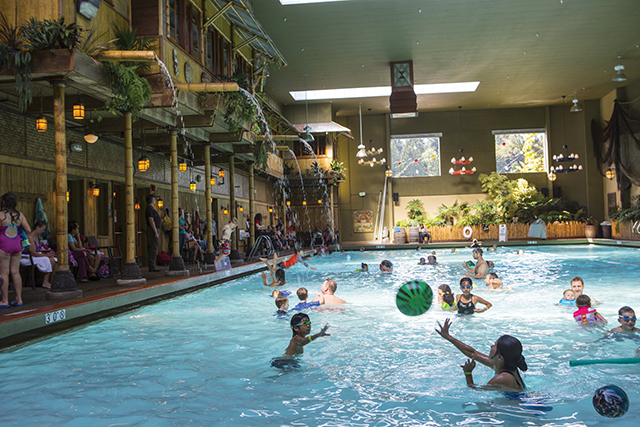
Start on downtown Bothell’s historic 100-year-old Main Street, which is currently being enhanced with lighting and new landscaping. Sankara Imports owner Katrina Cohn recently moved her India import shop from kid-friendly Country Village to Main Street, saying the community vibe is good for business. After growing up in Bothell, she left and stayed away for years, but returned, buying a house here five years ago. She notes that her cousin and best friend followed the same trajectory she did, all of them moving back within the same week.
A 15-year-old I met who works at Hillcrest Bakery, a European pastry shop that specializes in Dutch treats and has been open since 1935, admits that she’ll never leave, saying it feels safe, and that all the neighbors know each other. The Neverending Bookshop owner Annie Carl, who bought an affordable home here with her husband, says this suburban area feels like a small town and reminds her of her hometown, Kingston, Wash. She says that the community has rallied since the construction fire that destroyed much of the Bothell Mall in July.
Beyond Main Street, Bothell supports a high-tech and biotech community, and the University of Washington Bothell campus is ranked 36th among best U.S. colleges by Money magazine. Bothell boasts a brand-new city hall complex, and two new hotels are to be built near it.
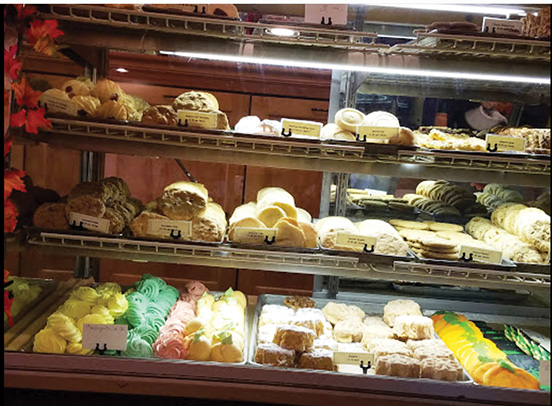
But where do residents hang out? The latest gathering space is Social Grounds Coffee and Tea Co., which opened last year in the Six Oaks apartment building near Main Street. Another gathering spot is the Anderson School property, a McMenamins hotel/restaurant/entertainment center. Bothell residents swim for free in its gargantuan swimming pool. Float on your back and stare at the three skylights. (My daughter and I spotted rainbows several times as we floated.)
The Anderson School is next to Bothell High School, which is within the area’s top-rated Northshore School District, a reason many families chose to live here. Michelle Gehlsen, a Bothell Municipal Court judge who has lived here for 15 years with her husband and son, says Bothell is in the center of everything, close to Woodinville, Kirkland, Bellevue, Lynnwood (and the Alderwood Mall) and 30 minutes from Seattle. Families no longer need to leave the city limits for restaurants and entertainment venues, and there are many outdoor recreational opportunities, including the Burke-Gilman Trail, the Park at Bothell Landing and Saint Edward State Park. Says Gehlsen: “People love to live in Bothell because it is a wonderful family community.”




